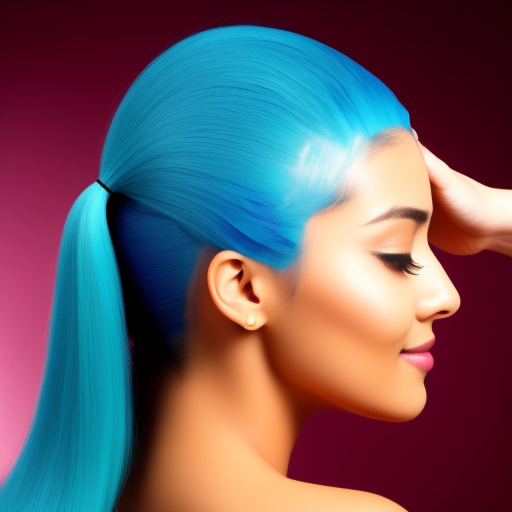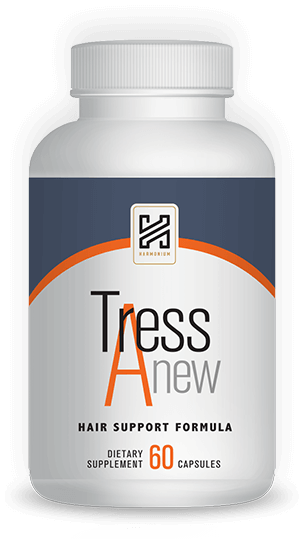Prevention Strategies and Lifestyle Changes to Reduce the Risk of Hair Loss
Hair loss is a common problem that affects millions of people worldwide. While there are several medical treatments available to treat hair loss, prevention strategies and lifestyle changes are often the best way to reduce the risk of hair loss. In this blog post, we will discuss some of the most effective prevention strategies and lifestyle changes that can help you maintain healthy hair and reduce the risk of hair loss.



What Causes Hair Loss?
Before we discuss prevention strategies and lifestyle changes, let’s briefly discuss the causes of hair loss. There are several factors that can contribute to hair loss, including genetics, hormones, medical conditions, medications, and environmental factors. In many cases, hair loss is a result of a combination of these factors.
Hair Loss Prevention
Hair loss prevention strategies can help to slow down or even stop hair loss from occurring. Here are some effective prevention strategies to consider:
- Healthy Diet and Nutrition
Eating a healthy diet that is rich in vitamins and minerals is essential for maintaining healthy hair. Your hair needs nutrients such as iron, protein, and vitamins A, C, and E to grow and stay healthy. Some of the best foods for promoting healthy hair growth include:
- Leafy green vegetables
- Eggs
- Berries
- Nuts and seeds
- Fish
- Avocados
- Sweet potatoes
- Exercise and Physical Activity
Regular exercise and physical activity can help to improve blood flow and circulation, which is essential for delivering oxygen and nutrients to your hair follicles. Aim to get at least 30 minutes of moderate-intensity exercise, such as brisk walking or jogging, most days of the week.
2. Stress Management
Stress can have a significant impact on hair loss. Managing stress levels through activities such as yoga, meditation, or deep breathing can help to reduce the risk of hair loss. If you’re struggling with stress, consider speaking to a mental health professional.
3. Scalp Health
Keeping your scalp healthy is essential for healthy hair growth. Use a gentle shampoo and conditioner that is suitable for your hair type and avoid using hot styling tools that can damage your hair. Massaging your scalp regularly can also help to improve blood flow and promote healthy hair growth.
4. Hair Care Products
Using the right hair care products can help to reduce the risk of hair loss. Look for products that are specifically designed to promote healthy hair growth and avoid products that contain harsh chemicals that can damage your hair.
The Big 3 Hair Loss Prevention
The big 3 hair loss prevention refers to three FDA-approved medications that have been shown to be effective in preventing hair loss:
- Finasteride
Finasteride is a medication that works by blocking the conversion of testosterone to dihydrotestosterone (DHT), which is the hormone that causes male pattern baldness. Finasteride is most effective in men with mild to moderate hair loss.
2. Minoxidil
Minoxidil is a topical medication that is applied directly to the scalp. It works by increasing blood flow to the hair follicles and stimulating hair growth. Minoxidil is effective in both men and women and is available over-the-counter.
3. Low-Level Laser Therapy
Low-level laser therapy (LLLT) is a non-invasive treatment that uses low-level laser light to stimulate hair growth. LLLT has been shown to be effective in both men and women with hair loss.
Lifestyle Changes to Improve Hair Health
Making lifestyle changes can also help to improve hair health and reduce the risk of hair loss. Here are some lifestyle changes to consider:
- Avoid Smoking
Smoking can have a negative impact on hair health and can contribute to hair loss. Quitting smoking can help to improve blood flow and circulation, which is essential for healthy hair growth.
2. Get Enough Sleep
Getting enough sleep is important for overall health and can also contribute to healthy hair growth. Aim to get at least 7–8 hours of sleep each night to ensure that your body has enough time to repair and regenerate.
3. Limit Alcohol Consumption
Excessive alcohol consumption can have a negative impact on hair health and can contribute to hair loss. Limiting alcohol consumption to moderate levels can help to reduce the risk of hair loss.
4. Avoid Tight Hairstyles
Tight hairstyles such as braids, ponytails, and cornrows can pull on the hair and cause damage to the hair follicles. Avoid tight hairstyles as much as possible and opt for looser hairstyles that are gentler on your hair.
5. Protect Your Hair from Environmental Damage
Environmental factors such as sun exposure, wind, and pollution can all contribute to hair damage and hair loss. Protect your hair by wearing a hat or scarf when you’re outside and avoid exposing your hair to excessive heat or harsh chemicals.
Hair Loss Myths and Facts
There are many myths and misconceptions surrounding hair loss. Here are some facts to keep in mind:
- Hair loss is not always caused by genetics. Other factors such as hormones, medical conditions, and medications can also contribute to hair loss.
- Wearing a hat does not cause hair loss.
- Shaving your head will not cause your hair to grow back thicker or stronger.
- Stress can contribute to hair loss, but it is not the sole cause.
- Hair loss can affect both men and women of all ages and ethnicities.
Final Thoughts
Hair loss can be a frustrating and challenging problem to deal with, but there are many prevention strategies and lifestyle changes that can help to reduce the risk of hair loss. Eating a healthy diet, exercising regularly, managing stress levels, and protecting your hair from environmental damage are all important steps you can take to maintain healthy hair. In addition to these lifestyle changes, there are also medical treatments available that can help to prevent hair loss. If you’re experiencing hair loss, speak to your doctor or a hair loss specialist to determine the best course of treatment for you.
here are some proven products for consideration:
FOLIFORT — Revitalize your hair
Our new formula contains several active ingredients such as antioxidants and minerals that protect your scalp from irritation and work to rejuvenate your follicles at the root.

Foliprime — Every bottle is made here, in the USA, in our FDA approved and GMP certified facility, under sterile, strict and precise standards. The FoliPrime dropper is natural and pure. You can rest assured that they do not contain any dangerous stimulants or toxins.

Tressanew- As much as we’d like to say yes, TressAnew is not for women who suffer from alopecia, female pattern baldness, or other medical conditions that affect your hair. We suggest that you address those issues with your health care professional.

Comments
Post a Comment